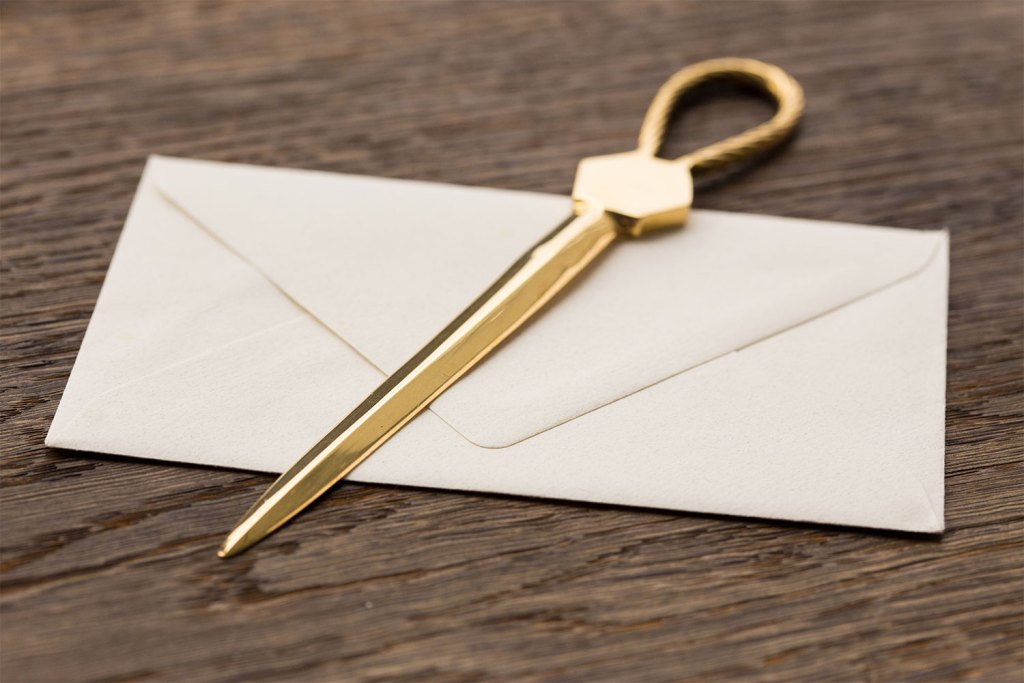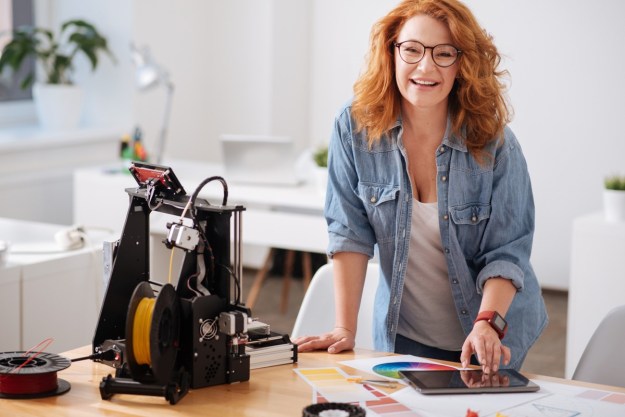Opening envelopes by hand is an annoying task. It’s time-consuming and not efficient. It’s also easy to find yourself ripping out part of the letter inside. This problem only gets worse if you receive a lot of mail — especially if you’re responsible for a big office mailroom. It’s also a problem that has been with us for a long time. People may have forgotten about it, but there is a simple solution. It’s one of the simplest of office supplies. A letter opener.
What is a letter opener?
Traditionally, a letter opener was a type of knife used to open envelopes quickly. Today, you can find them in many different styles and materials, and with blunt or sharp edges. There are even electric letter openers. Those are useful for large mail rooms with high volumes of incoming mail. The two most common varieties are the straight blade and the recessed blade. Straight blades tend to deliver cleaner cuts and look more traditional. Recessed blades are usually faster and safer to use. Choosing the best letter opener depends on your style and needs.

How to use a letter opener
Letter openers are really intuitive and easy to use. This is especially true if you’re using a hand-held one, meaning not a mechanical opener. Opening one envelope at a time, first place the envelope on a flat surface. It’s best to set the envelope so the knife will move away from your body. This will help you avoid injuries. Insert the blade into the top flap or crease of the envelope. Then, simply slide the letter opener from one side to the other. Again, it’s best to move in a direction that leads the knife away from you. For extra safety, make sure to hold the envelope firmly against the table with the other hand.
Using a straight-blade letter opener for this is quick and efficient. Make sure the weight and handle are comfortable for you. And consider a blunt edge for even more safety. This is probably the best method for a home office that doesn’t take in a lot of mail.
For most recessed-blade letter openers, this process is even simpler. Since there is less chance of injury with this design, you can work a bit faster. You will enter the knifed-edge of the opener into the flap or crease, then slide to open. The concealed blade protects your fingers, so you have less to worry about. Just make sure you get an opener with a sharp and durable blade. It’s a little harder to gauge the quality of these openers compared to the straight-blade ones. Also, make sure the material is comfortable to hold, especially if you will need to open a lot of mail every day.
Mechanical letter openers
We love the classic look of a straight-blade letter opener. But if you need to open a lot of incoming mail, nothing beats an automated letter opener. Some models are designed to handle up to 40,000 pieces of mail per hour. And they can handle almost any envelope size. A big difference is that electric letter openers can handle stacks of envelopes quickly. This means you can do other things while the machine works on the mail. If your office needs such a machine, just make sure it has a rubber, or nonslip, bottom for added safety.
Letter openers are great whether you just need to open a few incoming invoices or have 200 pieces of mail a day. They also make great gifts. Some letter openers are so well-designed they will look like art pieces on your desk. That’s not something you hear about office supplies every day.
Editors' Recommendations
- The best letter openers to open mail without damaging its contents
- The best magnetic screwdrivers to keep you from scrambling for the right tool
- How to tie a garbage bag so it never slips
- How long do LED bulbs last?
- How to clean a mop head so you don’t spread germs

